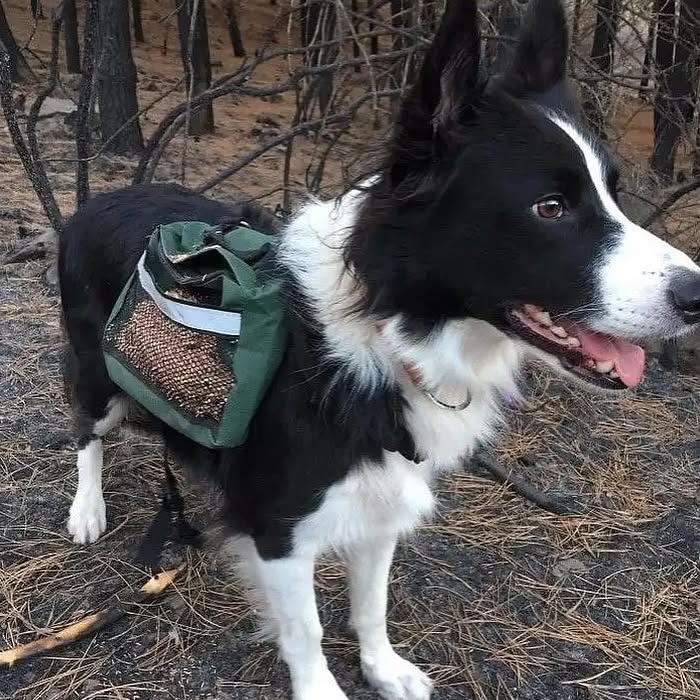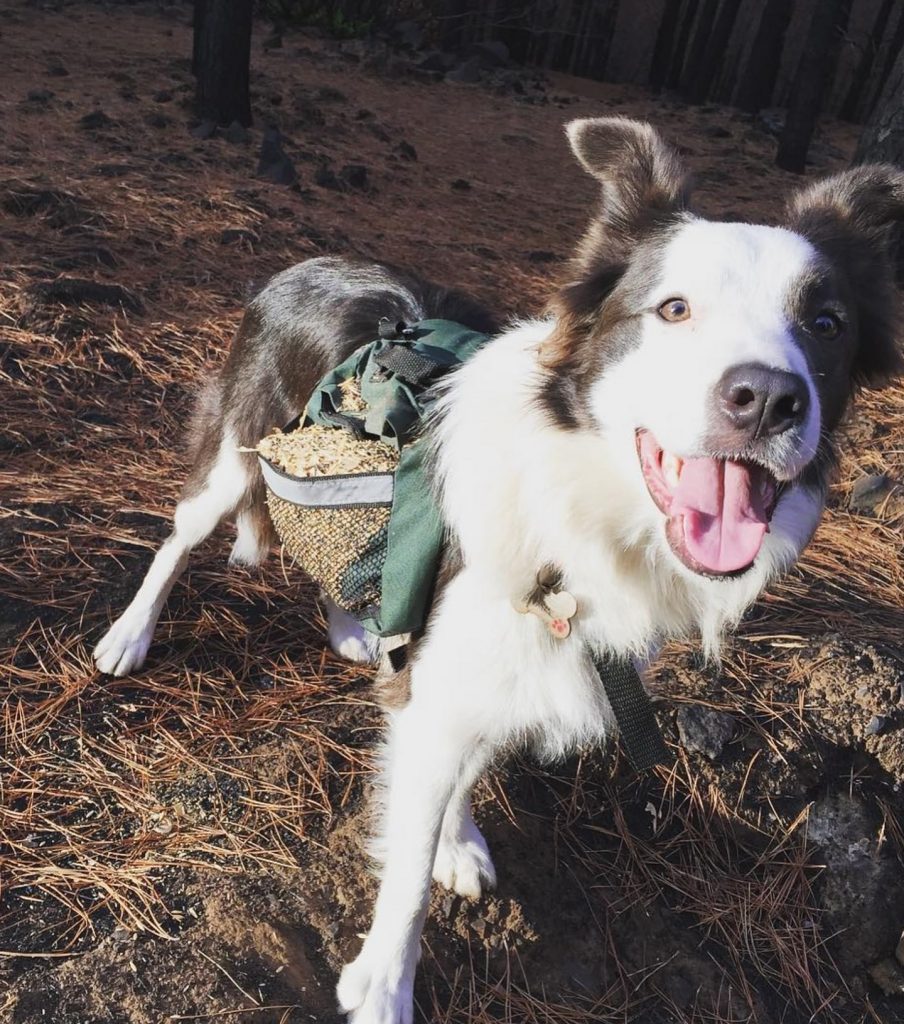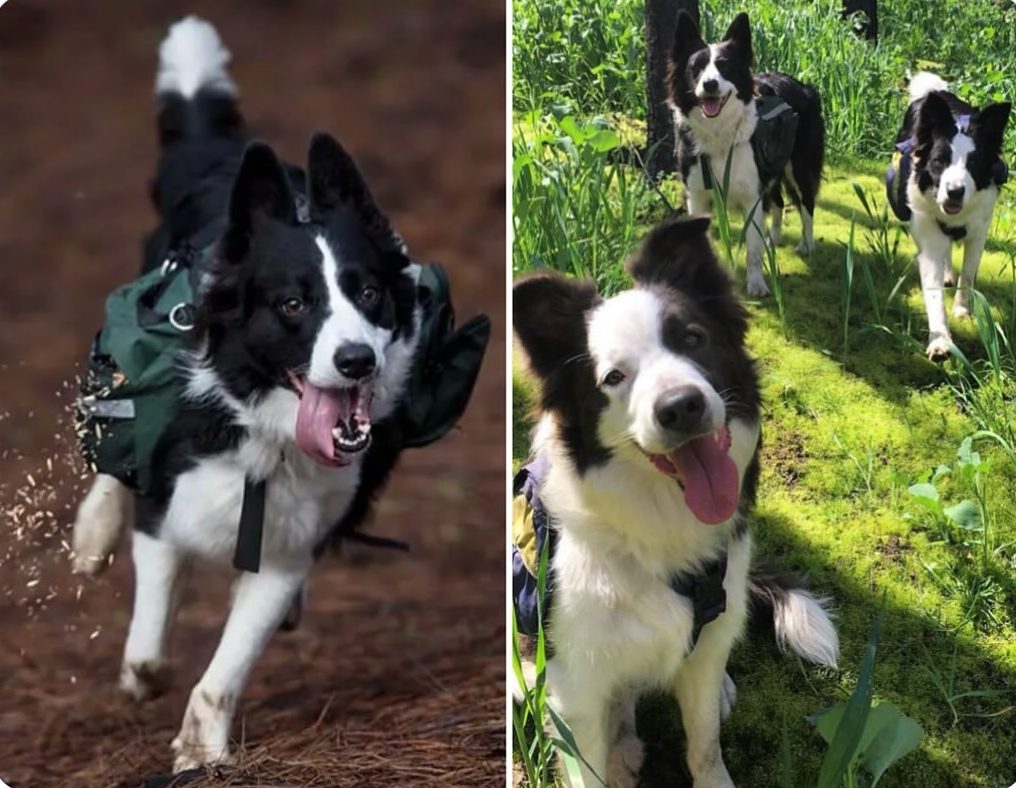How Three Happy Border Collies Are Saving Burned Forests in Chile by Running Around with Backpacks Full of Seeds
In the aftermath of wildfire, the world can look like it’s been wiped clean—scorched soil, charred trees, and a deep silence where birds and animals once thrived. But in the hills of Chile, something unexpected started happening after one such fire. A blur of black-and-white fur zipped through the blackened ground, tails wagging, tongues out, and little backpacks bouncing on their backs. These weren’t lost pets or strays—they were trained Border Collies on a mission to bring life back to the forest.
Meet Das, Summer, and Olivia. These three energetic pups were part of an ambitious, almost heartwarming experiment led by Francisca Torres, an environmentalist and professional dog trainer. Her organization, Pewos, focuses on using dogs in creative, purposeful ways. And this time, her idea was beautifully simple: What if dogs could help regrow a forest?

After a devastating wildfire in Chile, the clock was ticking. Reforestation is critical to prevent soil erosion, restore biodiversity, and protect local ecosystems from collapse. But the traditional process of planting seeds by hand takes time—lots of it. It requires manpower, funding, tools, and access to areas that are often difficult or even dangerous to reach. Francisca saw an opportunity where most people didn’t: she saw potential in her dogs.
She trained them to wear specially designed backpacks filled with native plant seeds. The idea was to let the dogs do what they love most—run. As they sprinted through the barren land, the backpacks would slowly release the seeds along the way. Just like that, with every jump, sprint, and tail wag, they were planting a future forest.
The magic of it all is that dogs are naturally enthusiastic, fast, and agile. They can cover huge areas much faster than a group of humans ever could. And they’re eager to please. While humans get tired or lose morale, these dogs were thrilled just to be out in nature, doing something that felt like a game to them. For Das, Summer, and Olivia, it wasn’t work—it was playtime with purpose.
More Than a Cute Story: It’s a New Way to Think About Conservation
Social media couldn’t get enough of it. The moment photos of the trio in their seed-dispensing backpacks hit the internet, the story exploded. People were tagging friends, sharing the story with captions like, “This is the kind of content I need,” and “We don’t deserve dogs.” But as adorable as the images were, the deeper story here is about innovation—and the desperate need for more of it in a warming world.
Chile has been hit hard by climate change. In recent years, wildfires have become more frequent, more destructive, and harder to control. Forests that once stood for centuries have been reduced to ash in days. And while firefighters and emergency crews work to stop the blazes, the question of what happens afterward is often left hanging.

Francisca’s project showed that there are ways to act quickly—ways that don’t rely on heavy machinery or massive teams. By using animals we already share our lives with, we can do serious environmental repair work in creative, low-cost, and low-impact ways.
Of course, the dogs didn’t just run wild. Their training was intense and specific. They learned not only to carry the backpacks but to stay on certain paths, return when called, and avoid eating or destroying the seeds. Each session lasted only about 15-30 minutes to avoid exhaustion, but in that short time, they could plant tens of thousands of seeds. That’s a lot of green potential packed into a single joyful run.
And what kinds of plants were they planting? Native grasses, shrubs, and trees—all selected for their ability to thrive in local conditions. The seeds weren’t just tossed randomly either; they were mixed with soil nutrients or wrapped in tiny balls to help them stick to the ground and germinate more easily.
One of the most touching things about the project is how deeply the dogs seemed to enjoy it. Videos show them leaping over fallen logs, zooming through open fields, and bounding between blackened stumps with tails wagging furiously. They weren’t just helping—they were thriving.
People around the world took notice. Environmental groups applauded the low-tech genius of it. Dog lovers beamed with pride. Some even started asking if similar programs could be started in their own countries. From California to Australia, where wildfires have left scars across the land, the potential for seed-spreading dogs is real—and growing.

Francisca’s mission didn’t stop with that one forest either. She and her dogs have continued to participate in environmental education programs, teaching children and adults about the power of biodiversity, the importance of native species, and how even small actions—like walking a dog—can ripple out into something much bigger.
At its heart, this story isn’t just about saving forests. It’s about how we choose to respond to crisis. When nature suffers, our instinct is often to mourn, to look away, or to wait for someone else to fix it. But here, three dogs and one determined woman showed what happens when you get creative, stay hopeful, and let a little joy lead the way.
So next time you see a burned forest or read another sad headline about climate change, remember Das, Summer, and Olivia. Remember the backpacks. Remember the zoomies through the ashes. And maybe, just maybe, think about how you too can plant a seed of change—no matter how small.

Daniel Reed is a curious mind with a passion for breaking down how the world works. With a background in mechanical engineering and digital media, he turns complex ideas into easy-to-understand articles that entertain and inform. From vintage tools and modern tech to viral internet debates and life hacks, Daniel is always on the hunt for the “why” behind the everyday. His goal is simple: make learning feel like scrolling through your favorite feed — addictive, surprising, and fun.
